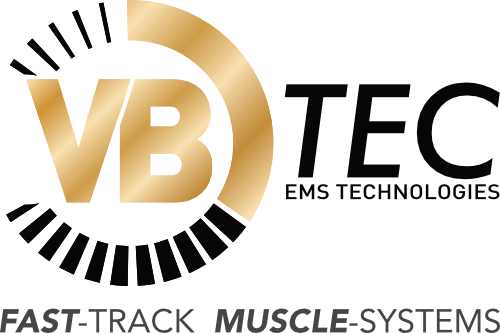Enhance your Performance, Build Power and maximise your VO2 Max!
I have to admit it: I am an endurance nerd
I have been participating in three IRONMAN races, 16 time IRONMAN70,3, 4-time Ultramarathons, a 48hour Survival Race and one out of 10 people who finished all 6 big endurance races on Mallorca (IRONMAN, IRONMAN70,3, Half Marathon, Marathon, Mallorca 312 Bike Race and the Mallorca 5000 SkyRace Ultramarathon) within one year.
It might sound conflicting but I hate running. This is why I always tried to figure out how to find the minimum effective training dose for my goals.
So I am kind of a geek expert in cases of minimum endurance training so let’s dive into this and I am gonna show you how to figure out how EMS/EMA training can help you to enhance your endurance, performance, power output, and VO2 max…in this case with a focus on my weapon of choice: The Visionbody Suit
The Black Hole
There’s a big, big problem in endurance sports. It’s a hole. A black hole. The black hole goes something like this…
The runner who rolls out of bed 3-5 days a week to run 45-60 minute at the same speed every time. Same speed. Same intensity.
Day-after-day, month-after-month, year-after-year.
Perhaps it’s the thumb-sucking solidarity we find in knowing exactly what our bodies are going to feel like during every training session, perhaps its the fear of going too slow or too hard and somehow messing up our training or our bodies, or perhaps it’s just not knowing exactly what to do and simply doing figuring something is better than nothing.
Simply stressing the same energy system over and over again not only results in a single-speed endurance athlete who can’t go fast when it matters and never goes slow enough for recovery, but may also result in a more rapid onset of overuse injury from repeated stress on the same joints.
Endurance training can be confusing
Should you use the long, slow aerobic style of steady and patient training, popularized by Phil Maffetone and used by many Ironman and marathoner professional endurance athletes (12)?
Should you use the approach of high-intensity interval training combined with teeth-gritting difficult workouts and weight training sessions?
Should you use some hybrid method called polarised training, with generous amounts of aerobic sessions combined with a short smattering of very hard efforts here and there (8)?
Or should you use something completely different? You’re about to find out – and also learn why endurance athletes are lazy, why the lens you see your training through matters, and the two best ways to build endurance as fast as possible.
How Your Body Builds Endurance
Before we delve into how to build endurance without putting in dozens of hours of training each week, it’s going to be important for you to understand how your body actually builds endurance, and what the primary determinants of cardiovascular and endurance performance actually are.
Your cardiovascular performance is based on three primary variables:
1) Heart rate (how many times your heart beats per minute)
2) Stroke volume (the amount of blood pumped per heartbeat)
3) Heart contractility (the forcefulness of each actual contraction of your heart muscle)
As each of these variables increases, the amount of blood flow and oxygen supply to your exercising muscles also increases.
So at first glance, it would seem that the heart is the primary thing you need to worry about when it comes to endurance training, and aerobic training has certainly been proven as one of the best ways to improve the variables above (18). But there are important determinants of endurance success that go above and beyond simply your heart.
Tiny powerhouses in your cells called mitochondria use oxygen to manufacture high levels of ATP energy via the breakdown of carbohydrates or fat. So if you increase your mitochondrial density, more energy becomes available to your working muscles, which allows you to produce higher amounts of force for longer periods of time.
In addition, your actual VO2max is a result of two variables:
1) how much blood your heart can send to your muscles (a combination of the heart rate, stroke volume, and heart contractility you already learned about)
2) how much of the oxygen sent to your muscles is actually extracted from the blood and used by the muscles before the blood heads back to your heart.
The second variable above depends on oxygen delivery to active muscle fibers, and this is influenced by everything from blood flow distribution to capillary density to arterial oxygen content to local enzymatic adaptations to the number and density of mitochondria (18).
Is there anything comparable to or superior to long, slow aerobic training?
The answer is yes, and this is where EMS/EMA and High Intensive Intervall Training enters the stage.
HIIT and the Problem With HIIT
So it would seem that HIIT is the solution for people who have limited time to train and can’t engage in the hours necessary for the polarized training approach.
With traditional steady-state training, you stretch your which makes it bigger and being able to pump more blood to your muscles.
HIIT training twitches the heart and so the heart becomes thicker. If you are a beginner in endurance training you must start to build an aerobic base to prep the heart by stretching it before you start twitching it with HIIT.
Twitching and untrained heart can lead to serious cardiovascular problems. Especially when you get older.
So HIIT works more effectively on your peripheral muscle fitness while endurance training works more effectively on your central, cardiovascular fitness.
There is no better or worse. Built an endurance base by steady-state training 2-3 times per week starting with 30min each session and built up to 60min each session.
After that start incorporate HIIT training at 30s fast pace followed by 4.5min of active resting for 4-6 rounds.
How To Use A Electrical Muscle Stimulation To Build Endurance and enhance VO2max
Increasing VO2max is best improved when not just training aerobically. The higher an athlete’s VO2max, the greater the potential to maintain a fast pace for long periods of time.
As pace and power generated increases, we recruit more muscle fiber types. When we recruit the three types of muscle fibers, ST (slow twitch), FTA (intermediate fast-twitch), and FTx (dedicated anaerobic fast-twitch), we do it in order from ST, to ST plus FTa, and finally ST plus FTa and FTx.
It turns out that regularly recruiting and training FTa and FTx shows greater improvement in VO2max than just training the aerobic ST muscle fibers (slow training). To maximize VO2max, you must improve the aerobic capacity of both their slow and fast-twitch muscle fibers.
Visionbody EMS/EMA strength programs train the ST, FTa, and the FTx muscle fibers. The Resistance Program targets the FTa muscle fibers while the Strength programs target FTx muscle fibers. These muscle fibers can be effectively trained with the Visionbody’s EMS/EMA training programs without as much stress as training above the anaerobic threshold.
All muscle groups can be effectively trained without stressing the body’s cardiovascular, muscular, and structural systems. Being able to more easily fit this important muscle fiber training into a weekly routine pays huge dividends in increased strength and VO2max.
The answer is…
You should use the hybrid method called polarised training, with generous amounts of aerobic sessions combined with a short smattering of very hard efforts here and there (8)?
This principle is guided by the Pareto Principle also known as the 80/20 Rule.
80% of the time you go slow and steady (180 – your age = The Pulse to go for) and 20% go hard. Like so hard that you need your mouth to get air into your lunges and cannot breathe only through your nose.
What can EMS/EMA do for your endurance?
Most of us only train one muscle fiber type at a time (Steady-state = Slow Twitch fibers orHIIT = Fast Twitch fibers).
EMS/EMA makes you train both fiber types at the same time, no matter which training style you perform.
This approach is not doubling the training load on one muscle fiber type, which is probably more than that muscle fiber type can reasonably absorb. Rather EMS/EMA trains two different muscle fiber types one time within each 48-hour training window. More of the muscle will be fatigued. The muscle adapts and can handle more load.
The Visionbody Suit comes with various types of programs:
Here is what the various programs are designed to do:
WARM-UP: Increases blood flow to the muscle increasing the temperature of the muscle. All the reactions associated with a muscular contraction will occur at a faster rate. The muscle will more easily change shape. Neural inhibition is decreased so that more muscle fibers can be recruited when the muscle contracts. Oxygen is released to the muscle at an increased rate.
STRENGTH: This program trains the Type IIb fast-twitch muscle fibers as well. It trains these muscle fibers to deliver energy anaerobically and generates a great deal of force for efforts lasting up to one minute. This is done without cardiovascular or mental fatigue. There is no risk of injury often associated with intense muscular contractions of this kind.
ENDURANCE: This program stimulates the Type I slow-twitch muscle fibers. These fibers are capable of delivering energy aerobically and therefore are the most used muscle fiber for efforts lasting many minutes to many hours.
it is reasonable to say that 15-20min of Visionbody EMS/EMA training equals 4-6hours of traditional strength/endurance training.
This is how the Training program might look like:
Traditional Training Week:
- Monday: 45min Slow and steady
- Tuesday: 30min High intensive interval Training
- Wednesday: Rest Day
- Thursday: 60-75min slow and steady
- Friday: 30min High intensive interval Training
- Saturday: 90-120min slow and steady
- Sunday: Rest Day
Training time: 4-5h
EMS/EMA Training Week:
- Monday: 20min Slow and steadily combined with EMS/EMA Suit
- Tuesday: Rest Day
- Wednesday: 15min High intensive interval Training combined with EMS/EMA Suit
- Thursday: Rest Day
- Friday: 20min Slow and steadily combined with EMS/EMA Suit
- Saturday: 15min High intensive interval Training combined with EMS/EMA Suit
- Sunday: Rest Day
Training time: 1h10min
EMS/EMA combined with traditional Training:
- Monday: 45min Slow and steady
- Tuesday: 15min High intensive interval Training combined with EMS/EMA
- Wednesday: Rest Day
- Thursday: 20min slow and steady combined with EMS/EMA
- Friday: 15min High intensive interval Training combined with EMS/EMA
- Saturday: 90-120min slow and steady
- Sunday: Rest Day
Training time: 2,5-3h
With Visionbody EMS/EMA training you can cut your training time and get more time for recovery which is very important and quite often neglected. Plus you target all muscle fiber types, especially Typ II which helps you to promote more mitochondria power in the muscle cell and enhances your VO2max.
And remember: You have only a limited amount of time to train, even if training is your job. To be efficient with the time you have, prioritize the training you need for your sport, daily activities, or fitness goals.
Visionbody EMS/EMA training helps you to achieve a higher VO2max that will both support maintaining faster paces with less training time and improve the ability to recover more quickly.
You are missing a big opportunity to become a better athlete and look the part if you are not integrating 2-3 EMS/EMA training sessions with your regular training routine or as stand-alone training.
References
1. Bartels, M.N., Bourne, G.W., & Dwyer, J.H. 2010. High-intensity exercise for patients in cardiac rehabilitation after myocardial infarction. Physical Medicine and Rehabilitation, 2 (2), 151-55.
2. Bergeron, MF, Nindl, BC, Deuster, PA, Baumgartner, N, Kane, SF, Kraemer, WJ, Sexauer, LR, Thompson, WR, and O’Connor, FG. Consortium for Health and Military Performance and American College of Sports Medicine consensus paper on extreme conditioning programs in military personnel. Curr Sports Med Rep 10: 383-389, 2011.
3. Billat, L.V. 2001. Interval training for performance: A scientific and empirical practice. Special recommendations for middle- and long-distance running. Part I: aerobic interval training. Sports Medicine, 31(1), 13-31.
4. Boutcher, 2011. High-Intensity Intermittent Exercise and Fat Loss. Journal of Obesity. 10.1155/2011/868305
5. Burgomaster, K.A., et al. 2008. Similar metabolic adaptations during exercise after low volume sprint interval and traditional endurance training in humans. Journal of Physiology, 586 (1), 151-60.
6. Daussin, F.N., et al. 2008. Effect of interval versus continuous training on cardiorespiratory and mitochondrial functions: relationship to aerobic performance improvements in sedentary subjects.American Journal of Physiology: Regulatory, Integrative, and Comparative Physiology, 295, R264-72.
7. de Oliveira, E.P., & Burini, R.C. 2009. The impact of physical exercise on the gastrointestinal tract. Current Opinion in Clinical Nutrition and Metabolic Care, 12 (5), 533-38.
8. Gibala, M. 2009. Molecular responses to high-intensity interval exercise. Applied Physiology, Nutrition, and Metabolism, 34 (3), 428-32.
9. Helgerud, J., et al. 2007. Aerobic high-intensity intervals improve VO2max more than moderate training. Medicine and Science in Sports and Exercise, 39 (4), 665-71.
10. Horowitz, J.F., & Klein, S. 2000. Lipid metabolism during endurance exercise. American Journal of Clinical Nutrition, 72 (2 Suppl.), 558S-63S.
11. Joyner, M.J. 1991. Modeling: optimal marathon performance based on physiological factors. Journal of Applied Physiology, 70 (2), 683-87.
12. Joyner, M.J., & Coyle, E.F. 2008. Endurance exercise performance: The physiology of champions. Journal of Physiology, 586 (1), 35-44.
13. Kubukeli, Z.N., Noakes, T.D., & Dennis, S.C. 2002. Training techniques to improve endurance exercise performances. Sports Medicine, 32 (8), 489-509.
14. LaForgia, J., Withers, R.T., & Gore, C.J. 2006. Effects of exercise intensity and duration on the excess post-exercise oxygen consumption. Journal of Sports Science, 24 (12), 1247-64.
15. Laursen, P.B. 2010. Training for intense exercise performance: High-intensity or high-volume training? Scandinavian Journal of Medicine and Science in Sports, 20 (Suppl. 2), 1-10.
16. MacDougall, J.D., et al. 1998. Muscle performance and enzymatic adaptations to sprint interval training. Journal of Applied Physiology, 84 (6), 2138-42.









